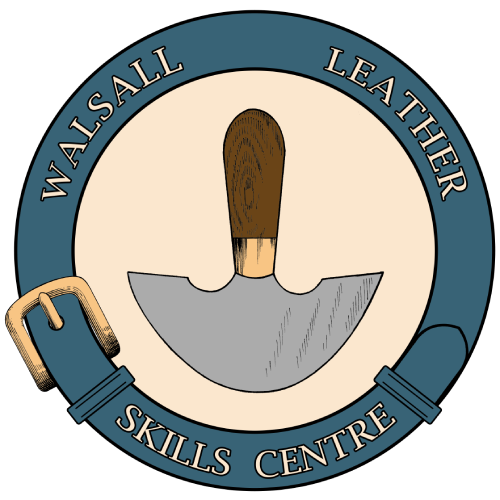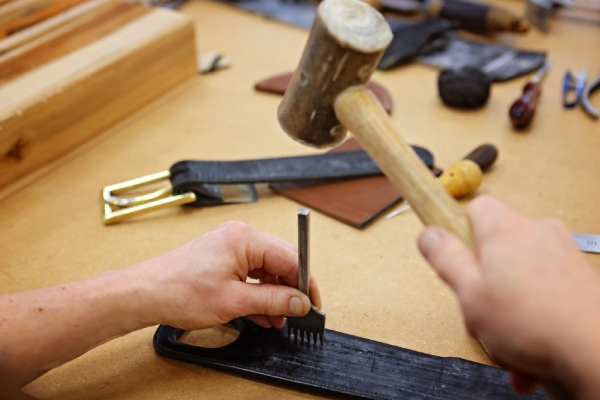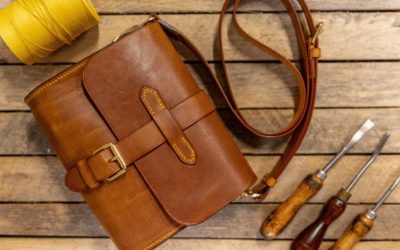Learning Leather Skills
Have you ever wondered, how do I learn to work with leather? Or maybe you’ve asked yourself, can I learn how to make things with leather or where can I learn leather stitching? You’re not alone! Many people are drawn to working with leather as a creative and practical skill, but getting started can feel overwhelming.
This guide will take you through everything you need to know, from understanding the basics to finding the best courses to help you learn how to get started and master this timeless craft.
Why Learn Leatherworking?
Leatherworking is more than just a hobby—it’s an art form with practical benefits. Whether you dream of making bespoke leather goods, repairing saddles, or learning intricate stitching techniques, this skill opens up creative and professional opportunities.
Some key reasons to learn leatherworking include:
- Creative Expression: Turn your ideas into functional works of art.
- Practical Skills: Make or repair items like belts, wallets, and bags.
- Career Potential: Build a business or start a career in leather crafting or repair.
Step 1: Learn Leatherworking Basics
If you’re asking, how do I learn to work with leather?, the first step is understanding the tools, materials, and techniques involved.
What Leathers Tools You Need
- Basic Tools: A stitching awl, leather punches, and a cutting knife are essential for beginners.
- Understanding Leather Types: Learn the differences between full-grain, top-grain, and other types of leather.
- Beginner-Friendly Techniques: Start with simple tasks like cutting, stitching, and edge finishing.
Step 2: Can I Learn How to Make Things with Leather? Absolutely!
Yes, you can absolutely learn how to make things with leather! Starting small and practicing consistently is the key.
What Can You Create as a Beginner?
Start simple with smaller items. Key-rings, card holders, wallets, coasters, or even decorative pieces are great for honing basic skills. Once you’re comfortable you can try belts, tote bags, or leather journals.
How to Learn
- Follow Online Tutorials: Great for picking up basic techniques.
- Attend Hands-On Workshops: Nothing beats learning directly from experienced leatherworkers and experts in the trade.
- Commit to Structured Courses: Professional courses, like those at Walsall Leather Skills Centre, provide in-depth training.
Step 3: Stitching is Fundamental. Where can I learn it? Finding the Right Training Program
Leather stitching is a skill that is worth learning. It opens up many possibilities and can be useful regardless of the direction your want to take your crafting. You might be wondering, where can I learn leather stitching that’s hands-on and comprehensive?
Why Choose Walsall Leather Skills Centre?
- Expert-Led Courses: Gain hands-on training from experienced instructors.
- Beginner to Advanced Options: Whether you’re starting from scratch or refining your skills, there’s a course for you.
- Specialised Training: Courses like the Foundation Leatherworking Course teach essential stitching techniques and more.
Our courses cover many aspects of leather work, from saddlery courses for CPD or to make a full saddle from start to finish, to tool maintenance and sharpening, fundamental to your success as a craftsperson.
Step 4: Develop Your Skills Through Practice and Projects
Once you’ve started learning, the best way to improve is by practicing regularly.
Practice Makes Perfect
- Work on Personal Projects: Start with small items you’ll use daily, like wallets or belts.
- Experiment with Techniques: Try different stitching styles, from saddle stitching to decorative finishes.
- Seek Feedback: Share your creations with peers or instructors for constructive criticism.
Step 5: Build Your Portfolio and Network
There is no requirement to take your skills to industry or learn to make money, but should you want to turn your passion into a career, building a portfolio and connecting with other professionals is crucial.
What to Include in Your Leather Portfolio
- High-quality photos of your work.
- A variety of projects showcasing different skills.
- A brief description of the tools and techniques used.
Networking Opportunities
- Join Leatherworking Communities: Online forums and social media groups are great for connecting with other crafters.
- Attend Events: Known as the heart of UK leatherworking, Walsall hosts trade shows and exhibitions perfect for networking with like minded people.
- The Walsall Leather Museum is a key venue that celebrates the town’s rich leatherworking heritage. While the museum itself doesn’t host large-scale trade shows, it organises a variety of events, workshops, and exhibitions throughout the year that are valuable for networking and learning. These activities provide insights into leather craftsmanship and offer hands-on experiences.
Step 6: A Career in Leatherworking
Should you want to develop your skills and make an income from your leather working, you first need to consider the various pathways. There are many industries where you can position yourself and in which leather skills can be useful.
Career Options
- Custom Leather Goods: Create bespoke leather items for clients.
- Repair Services: Offer specialised repair services for saddles, bags, and more.
- Equestrian Industry or Saddlery: Work with saddles, bridles or specialise in harness or side saddle making.
With the growing demand for handmade goods, your skills will be highly sought after.
It is always a good time to learn new skills
If you’ve been asking questions like how do I learn to work with leather, can I learn how to make things with leather, or where can I learn leather stitching, now you have the answers!
Leatherworking is an exciting and fulfilling craft that anyone can learn with the right guidance and dedication.
At Walsall Leather Skills Centre, we’re here to support your journey. Whether you’re starting with the basics or looking to refine your skills, our courses provide the training and expertise you need. Ready to get started? Check out the courses on offer for 2025 and get started on something new and exciting. You never know where it will take you.




